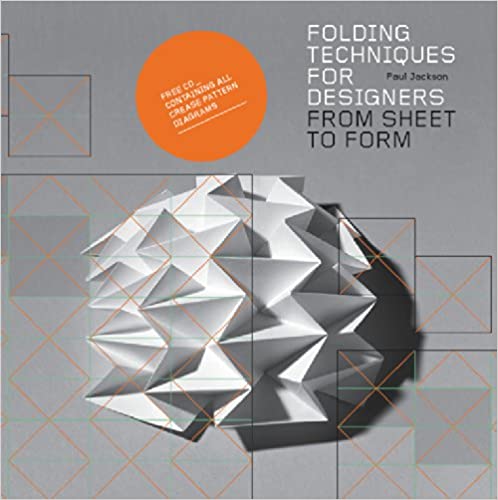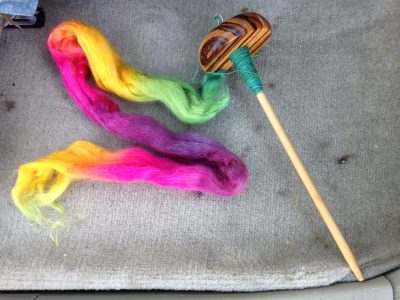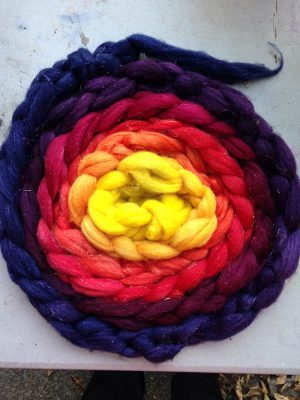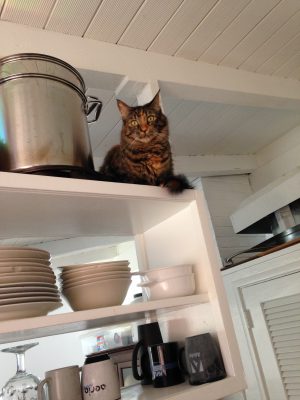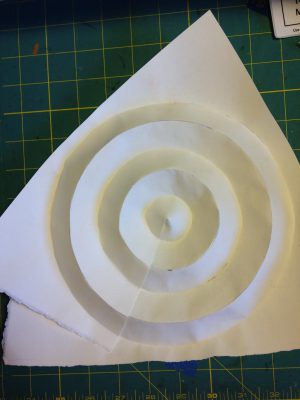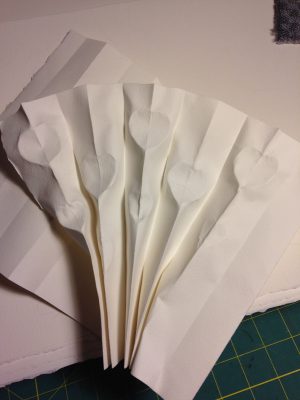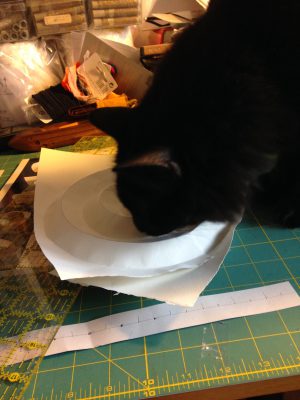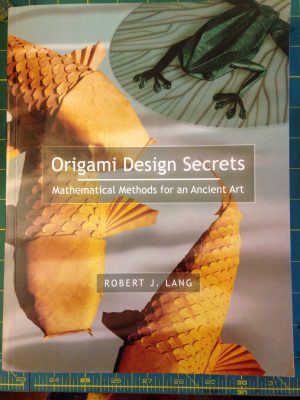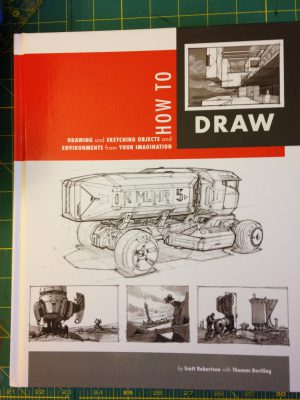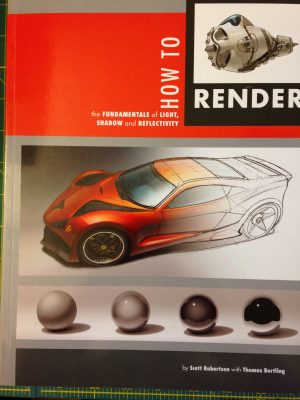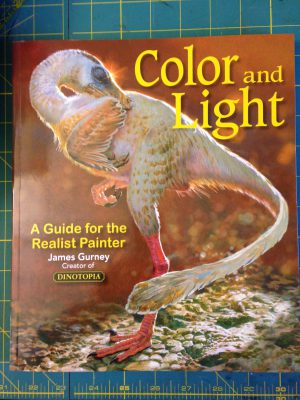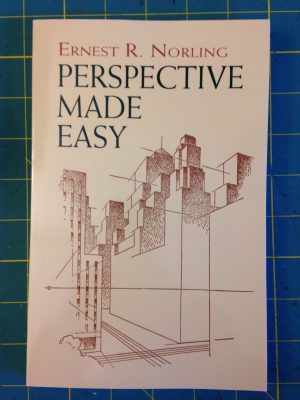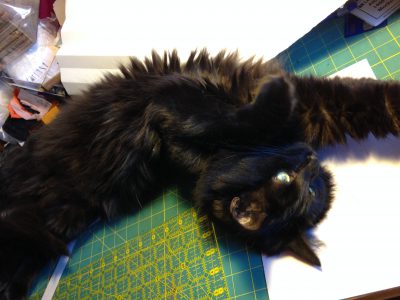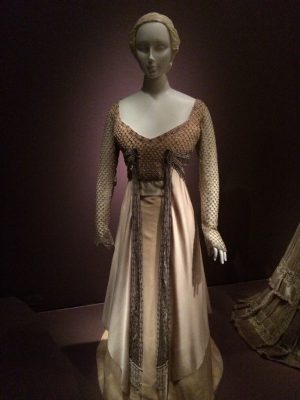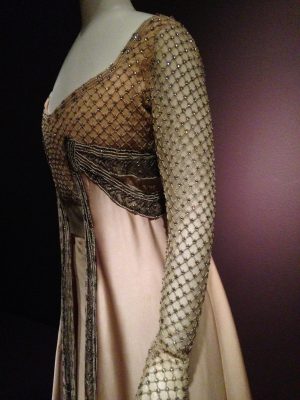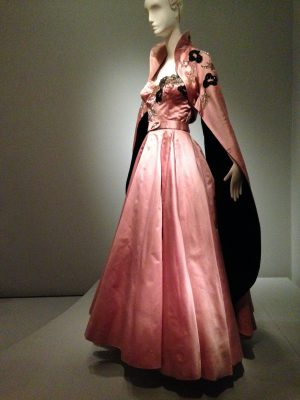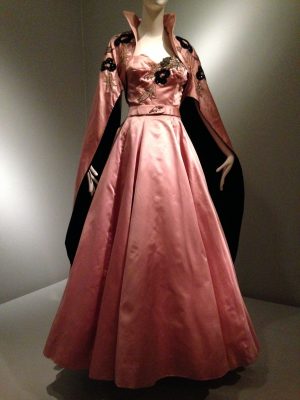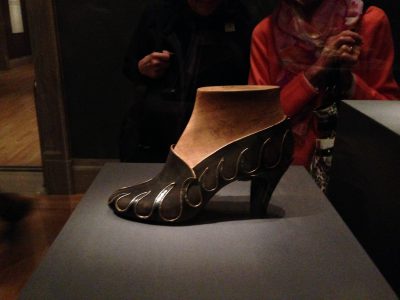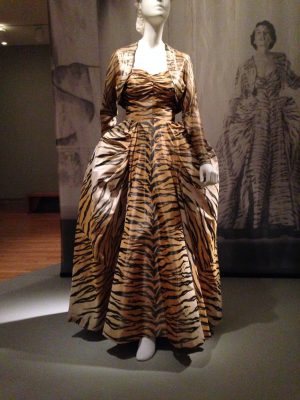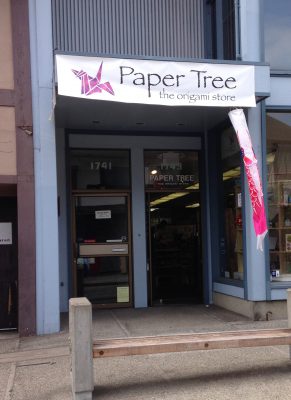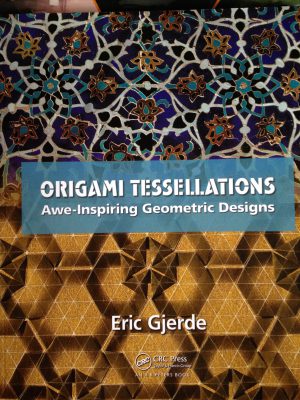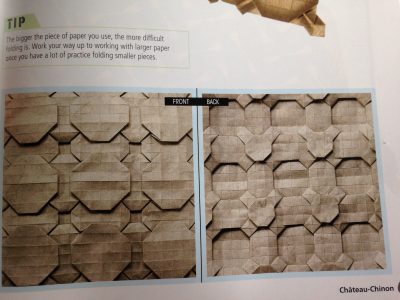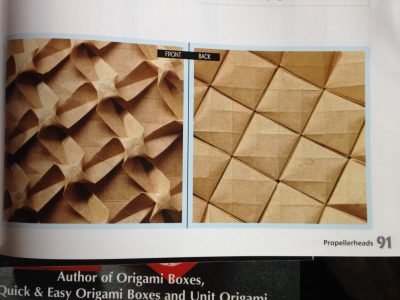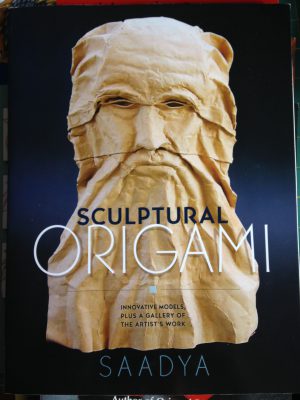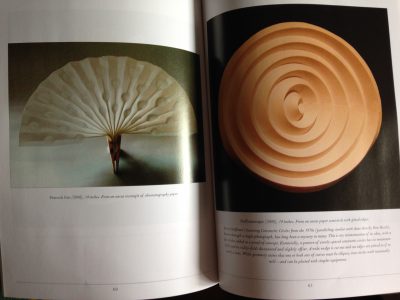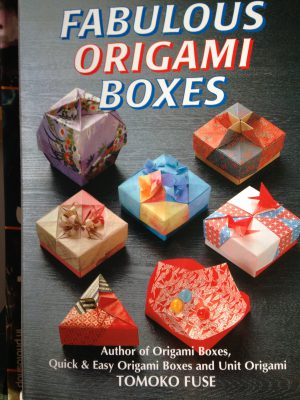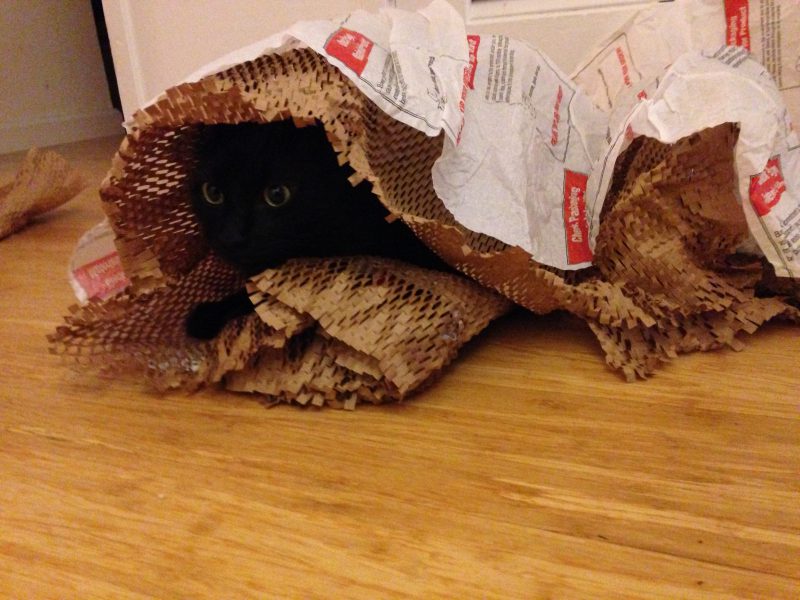….human error taketh away.
After about two hours of pulling through knots, I ran into a snag: the knots weren’t pulling through properly.
So I moseyed around to the back of the loom, where, much to my distress, I found this:
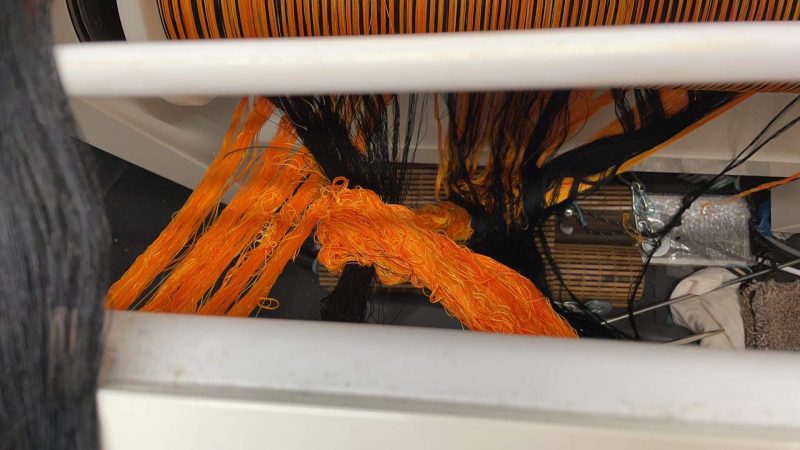
Somehow, I had managed to loop the orange warp around the black warp before starting to tie on.
Which meant that I had a major topological problem on my hands. To fix it, I was going to have to cut off, unloop, and retie that entire section of the orange warp, which meant about 2/3 of it. 880 knots, at least.
Since it was going to be difficult, fiddly, and error-prone to retie only the orange-warp knots and not the black-warp knots, it was probably going to be much safer to retie all of the warps on that side. 1,760 knots.
So I did the only reasonable thing, which was to put down the scissors, back slowly and carefully away from the loom, and go have a stiff drink. (Well, a cup of hot chocolate, anyway. I can’t drink alcohol – all it does is make me throw up. Which is a pity, because a couple shots of good whiskey were seriously called for.)
After a couple of days, I came back to the loom, spent a couple hours carefully pulling back and snipping out the knots I had just spent two months tying, un-looped the orange warp, and prepped the warp for re-tying.
Then I looked at the remaining tied-on warp and realized that there was a mis-ordering of the warp in that section as well. It’s a subtle problem, but you can see it in this photo:
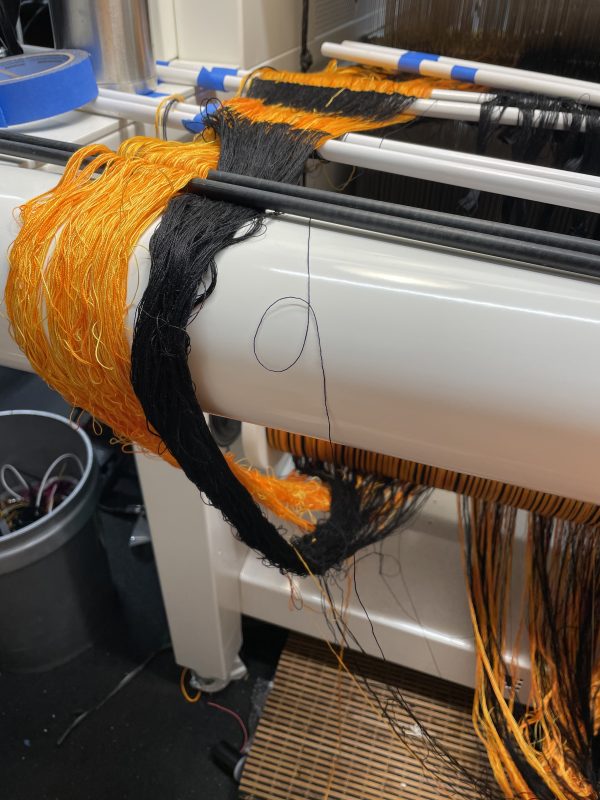
As the warps come off the warp beam at the bottom, the black warp is on the inside. But as it passes over the back beam at the top, the black warp is on the outside. It’s twisted.
This might not actually be a problem if I removed the lease sticks holding the threading cross – the threads would straighten out their own ordering and all might be well (I’m not good enough at 3D visualization to tell). However, the lease sticks are my insurance against complete disaster should something turn out to be wrong with the threading. Had I removed the lease sticks before discovering the loop mentioned above, I would be throwing away the warp right now because I would have lost the separate threading cross for the two warps. So no way, no how am I giving up those lease sticks, at least not until I have woven and debugged the warp and made completely sure that everything is working.
However, that means I have to – you guessed it – retie the ENTIRE warp, not just two-thirds of it.
Time to put down the scissors, back away again, and go have an ice cream sundae. With hot fudge and whipped cream, dammit. (Hot chocolate wasn’t going to cut it this time.)
So here I am, two months’ work down the drain, starting over.
Oddly, I am not as discouraged as you might expect. I am also not engaged in self-recrimination. Twenty years of professional experience as a project manager has taught me that disasters happen, and also that there is no utility in pointing fingers when they do. The important part is doing damage control, figuring out how to recover from the disaster and proceed onwards, and (after all that is done) figuring out what happened and how to keep it from recurring. Twenty years of keeping teams from blowing up at each other in the middle of a crisis (and fending off angry executives) does teach one something about staying calm and carrying on.
So: damage control is done, I’ve figured out what needs to be done and am doing it. How it happened? Mostly, it happened because I’m not very good at spatial thinking, and I didn’t check carefully enough that there weren’t any loops or twists BETWEEN the two warp chains when I was setting them up. I’ve never beamed two warp chains onto the same warp beam before, and while I was very careful to make sure there were no twists in each warp chain, it didn’t occur to me that they could be twisted or looped around each other. I left the raddle lease sticks in because they weighted the warps nicely for threading, but they obscured my view of the warp, which meant that I didn’t see the loop in the warp until too late. As far as the left-hand twist went, I just didn’t notice it, or didn’t think it was important, until too late. Next time I know to look for it, and I’ll be much more careful about checking the entire path of the warp from the beam to the heddles while tying on.
I do, however, need something to motivate me while I spend (probably) another two months tying on again. So I’ve gone out and bought a couple new books to continue expanding my interest in folded forms. The one that’s currently exciting me is a book by Paul Jackson, Folding Techniques for Designers. Here’s a pic of the cover:
The whole book is filled with intriguing sculptural forms that can be folded from paper. I imagine I could use stiffened or stitched cloth to create similar sculptural forms. I’m planning to order some heavy bull denim and try starching it to see whether it would be suitable for folding. Or I may weave some 20/2 cotton cloth on the Baby Wolf and try using that for folding, until I can weave something on the jacquard.
I am not sure whether that is compatible with my California fire season theme, but at the moment I’m brainstorming ideas freely, so I’m not wedded to the California fire season theme either. I did see one or two forms that might work well with that theme, though, so I’m not ruling it out either.
So….major setbacks this week, but also some major sources of excitement. Onward and upward!
